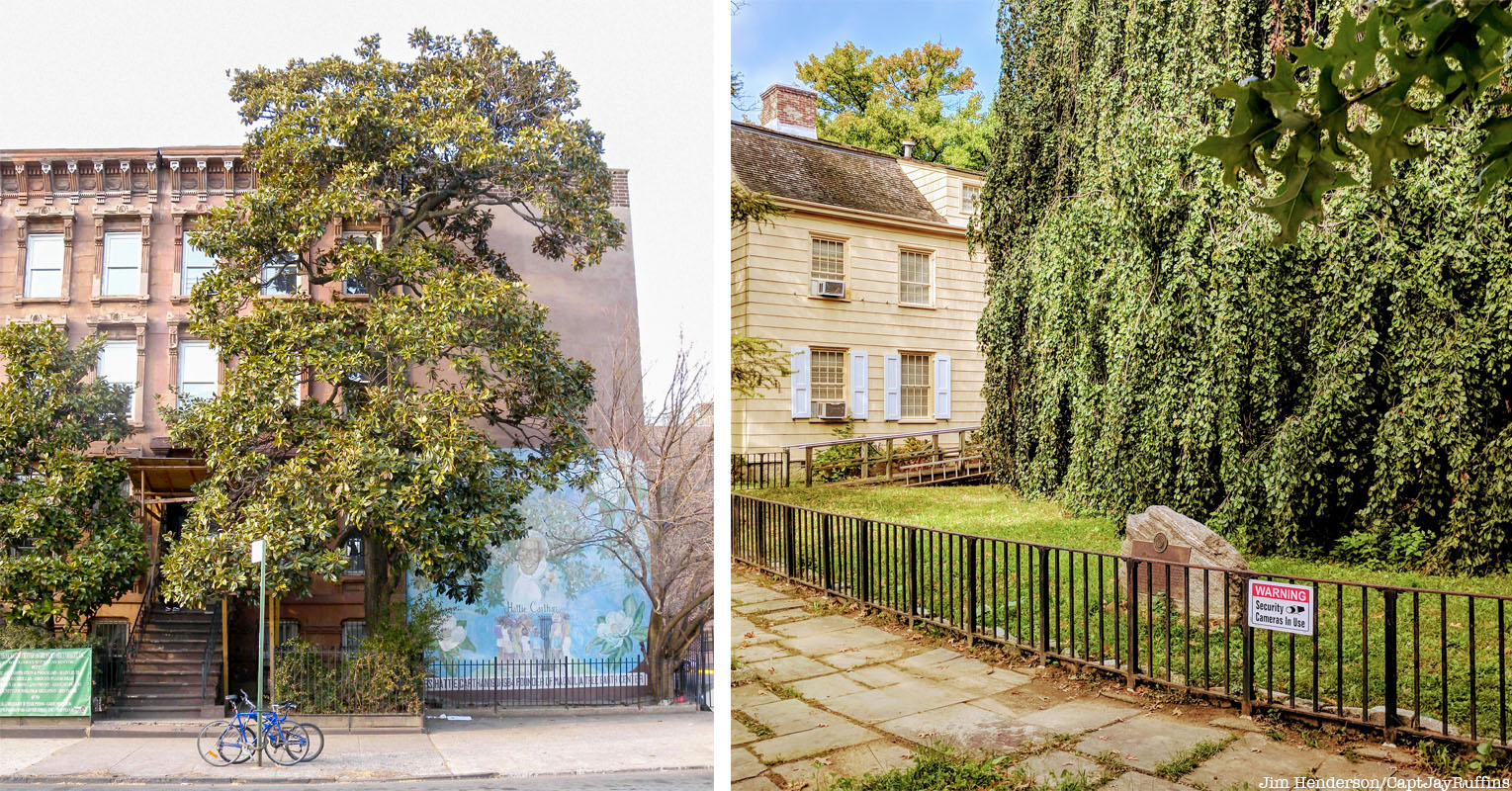While New York City’s landmarks are usually thought of as individual buildings or historic districts (and the occasional park), there are some unusual ones in the mix. Two of those landmarks are living things: trees. Yes, New York City has had two landmarked trees (one is no longer standing). One was located in Queens, and the other is in Brooklyn.
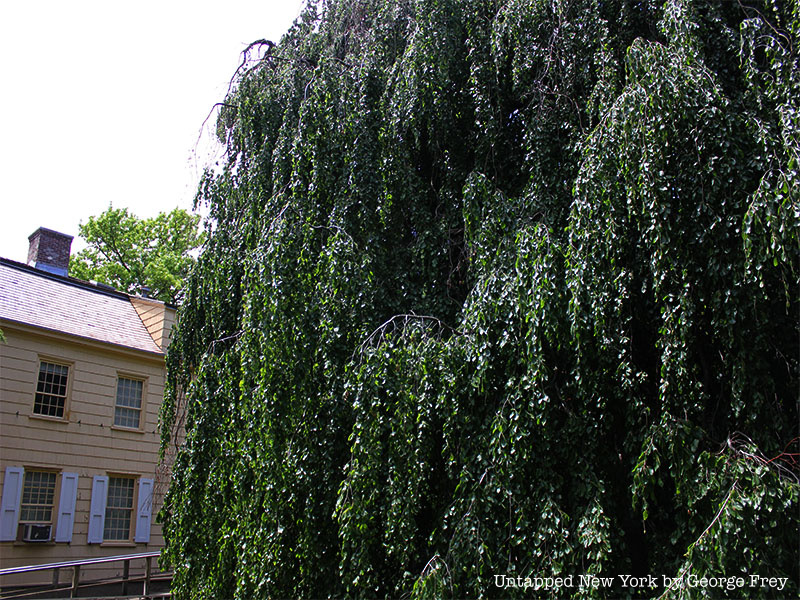
The oldest of the two landmarked trees was known as the Weeping Beach Tree, located at Weeping Beech Tree Park at the Kingsland Homestead in Flushing. It dated to 1847, when it was planted by nursery owner Samuel Bowne Parsons and stood here until 1998. The tree species was brought to America from Belgium, selected from the estate of Baron DeMann in Beersal. Incredibly, it is believed that all Weeping Beech trees in America are descended from that first tree.
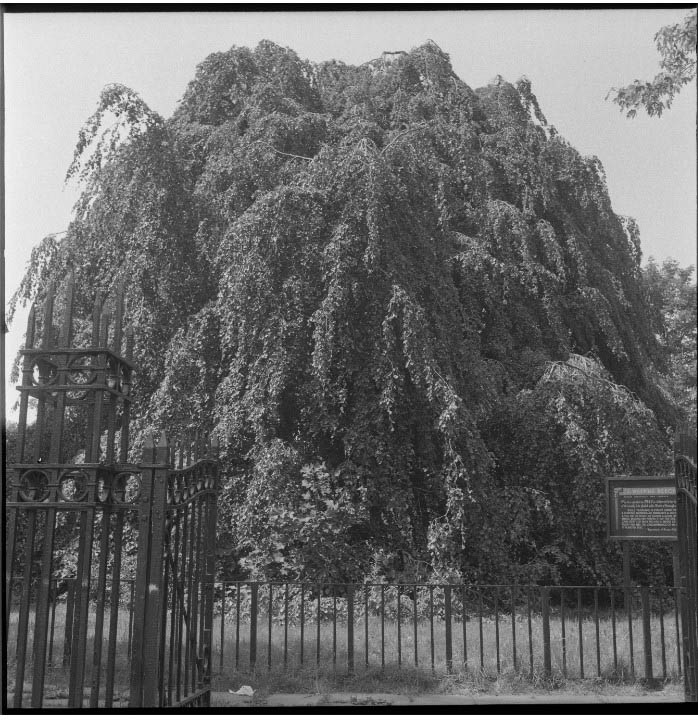 The original Weeping Beech tree, circa 1960s. Photo courtesy Landmarks Preservation Commission.
The original Weeping Beech tree, circa 1960s. Photo courtesy Landmarks Preservation Commission.
In the 1966 Landmarks Preservation Commission designation report, the commission deemed the tree “an extraordinary gift of nature.” The architects on the commission continued rapturously, “It is unfortunate that no one has immortalized ‘The Weeping Beech tree’ in American literature as Longfellow did the ‘Village Chestnut Tree,’ but to local citizens and to many thousands from far and wide ‘The Weeping Beech’ is known, admired, and venerated as a mighty tree, survivor of a past era…We cannot be enthusiastic enough for this giant among trees.” At the time, it stood over 60 feet tall with a spread of over 85 feet, and had a trunk 14 feet in diameter. NYC Parks writes that its “branches touched the ground and re-rooted, creating a ring of offspring surrounding its immense canopy.” The Weeping Beech tree died of old age in 1998 but you can still find a large offspring inside Weeping Beech Park today.
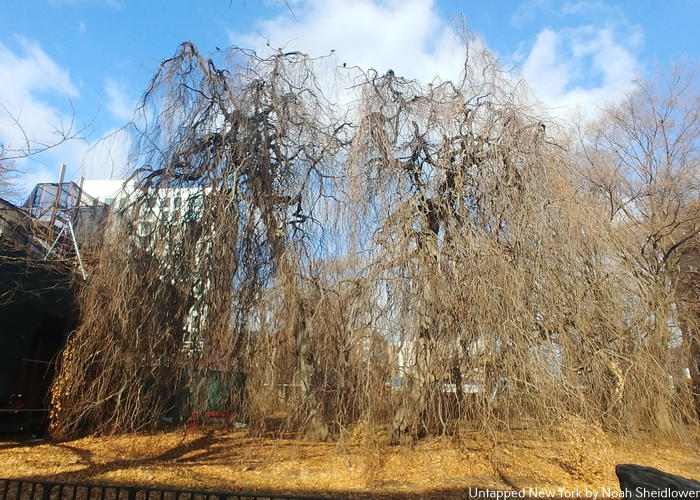 Weeping Beech park
Weeping Beech park
The Kingsland Homestead was the first landmark in the borough of Queens, built in 1785 by a Quaker farmer named Charles Doughty, and the only remaining example of 18th-century architecture in Flushing. This is not the original site however, as the building was moved twice. The Kingsland Homestead is also home to the Queens Historical Society. The tree is also located next to the Bowne House, one of the oldest buildings in New York City.
 Photo from Wikimedia Commons by Jim Henderson
Photo from Wikimedia Commons by Jim Henderson
The second of the landmarked trees fortunately still stands, although it has been partially obscured by scaffolding for many years. The Magnolia grandiflora in Bedford-Stuyvesant is located in front of 678 Lafayette Avenue across from Herbert Von King Park. The tree was planted in 1885 by a William Lemken from a seedling brought back from North Carolina. Placed in front of his townhouse, the evergreen tree releases white lemon-scented flowers which are the state flowers of Mississippi and Louisiana. The Magnolia grandiflora hails from North Carolina, and was one of the first exotic trees to be exported to Europe. It can grow up to 70 feet, but rarely survives north of Philadelphia. While magnolia sounds quintessentially southern, the genus Magnolia is actually named for Pierre Magnol, professor of medicine and director of the botanical gardens at Montpelier, France working in the 17th century. The Magnolia grandiflora is one of the entries in our book Secret Brooklyn.
The Landmarks Preservation Commission landmarked the tree in 1970 and clearly felt passionate about it, writing in the official designation report, “It is all the more remarkable, therefore, that the seedling which Mr. William Lemken sent up from North Carolina some 85 years ago…should have survived so long. It is thus for its inherent beauty as well as for its rare hardiness that this particular Magnolia grandiflora has become a neighborhood symbol and a focus of community pride.”
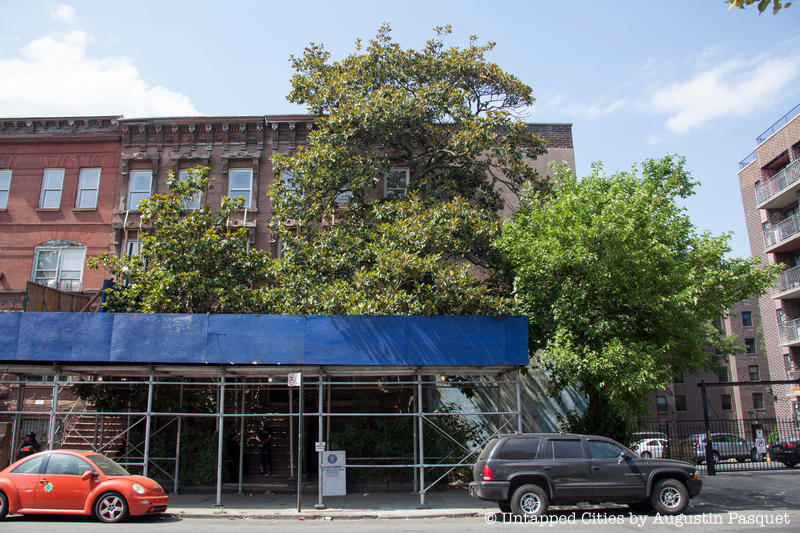
In fact, a local resident, Hattia Carthan, was responsible for preserving the tree in the 1950s and raising funds for it in the face of oncoming development — a parking lot and housing projects were planned next to it. Carthan founded the Magnolia Tree Earth Center in 1972 to bring green programs to the Bedford-Stuyvesant neighborhood, using the symbol of the famous tree to encourage environmental awareness and youth development in the community. The Magnolia Tree Earth Center is still active today, located next door at 677 Lafayette Street.
One other very notable tree we feel is worthy of landmarking is The Queens Giant, a tulip tree in Alley Pond Park believed to be the oldest living thing in New York City. It is believed to be over 450 years old.
Next, check out several other unique landmarks in New York City, including a landmarked ruin, sidewalk clocks, a street grid and more.






